Few plant genera are as fascinating or versatile as Euphorbia (Spurge) — a group of over 2,000 species that includes both annual and perennial plants ranging from delicate flowering forms to bold evergreen shrubs. Despite its unflattering common name, Spurge, this family is celebrated for its unique cyathia blooms, striking foliage colors, and drought tolerance. Whether you’re drawn to the soft white haze of Diamond Frost or the bold variegation of Ascot Rainbow, Euphorbia brings structure, contrast, and resilience to gardens of all styles.
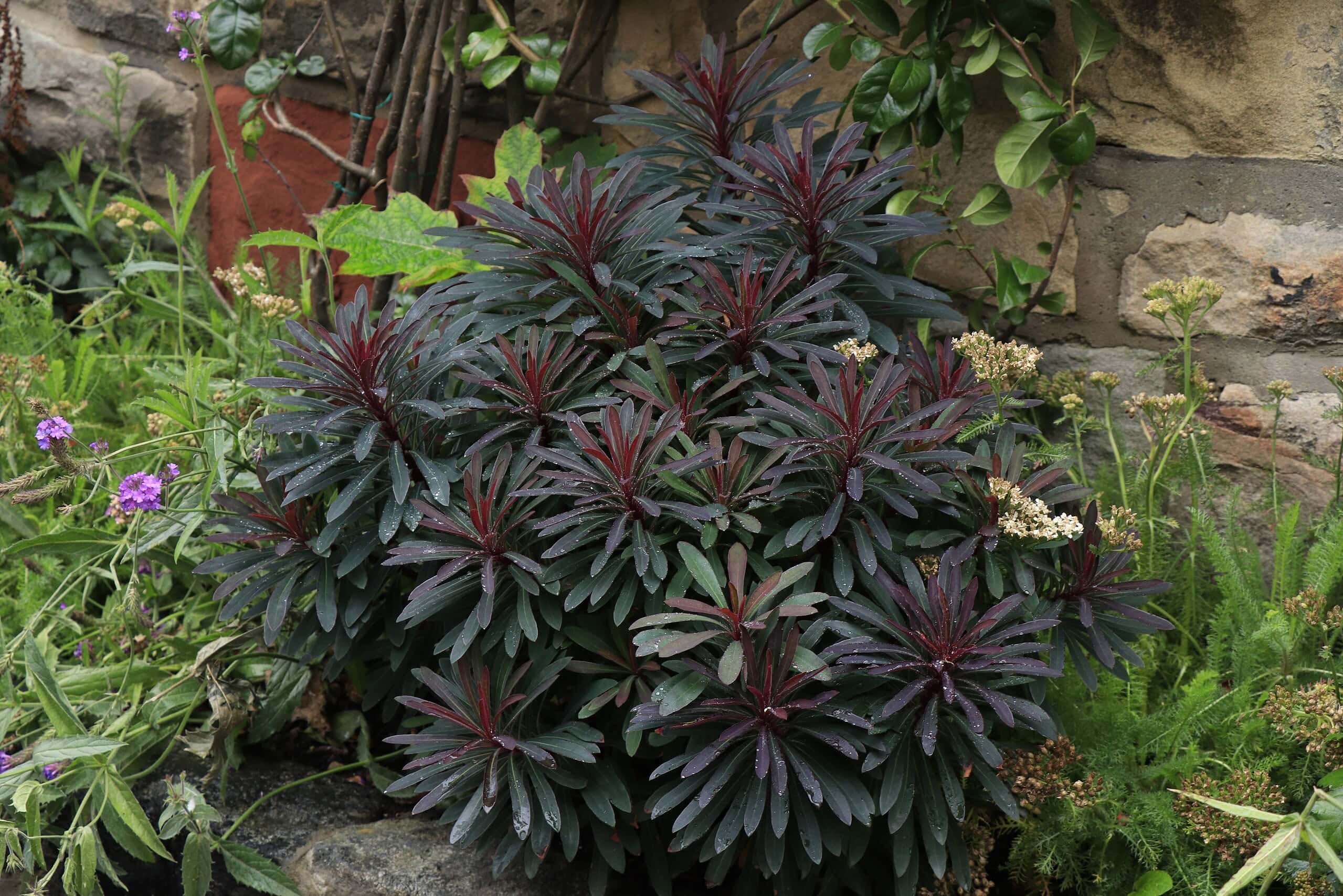
Our Selection Of Euphorbia
At Martin Garden Center, we typically stock 4″ perennial Euphorbia year-round, though availability of specific hybrids varies by season. Generally, we always have Ascot Rainbow year-round, but only occasionally will we have the other varieties. Larger sizes (6″ and 1-gal) are occasionally available. Perennial Euphorbia is highly popular, often staying evergreen through Upstate Winters.
Perennial Euphorbia (Evergreen, Drought-Tolerant)
At Martin Garden Center, we offer perennial Euphorbia almost year-round — admired for their colorful foliage, winter hardiness, and spring blooms. Perennial Euphorbia stays evergreen through most Upstate SC winters (Zone 8A) and provides winter color when many perennials fade. Our most common varieties include:
- Ascot Rainbow – Variegated green and yellow foliage with chartreuse bracts edged in red; evergreen and heat tolerant.
- Blackbird – Deep burgundy foliage with bright lime-green bracts; excellent for contrast plantings.
- Bonfire – Foliage shifts from burgundy to fiery orange; ideal for autumnal color schemes.
- Miner’s Merlot / Ruby Glow – Compact forms with red-tinted leaves and bright yellow bracts.
- Tasmanian Tiger – White and green variegation with creamy bracts; striking focal point.
- Glacier Blue – Cool gray-green foliage edged in cream; excellent in contemporary landscapes.
Annual Euphorbia (Soft, Airy, Continuous Bloomers)
Our annual Euphorbia selections feature delicate white, self-cleaning blooms that complement virtually every plant in your garden or containers. Available in spring and early summer; ideal companions for Petunias, Calibrachoa, and Lantana.
- Diamond Frost® – The Proven Winners® classic; clouds of airy white flowers all season.
- Euphoric Double White – Compact habit with full, double white blooms.
- Flurry – Vigorous and free-flowering; great for mass plantings or mixed containers.
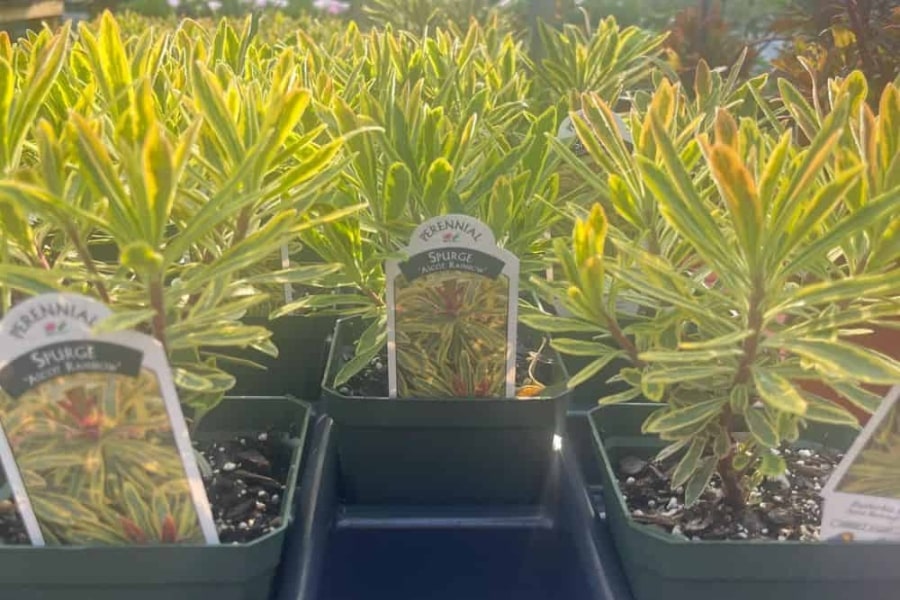
Annual Euphorbia, with airy white flowers on wiry stems, pairs well with everything. The most popular annual Euphorbia is Diamond Frost, an award-winning Proven Winner’s brand. We grow Diamond Frost and stock other 4″ annual Euphorbia from vendors, filling nearly a full table (80-160+ plants) in Spring and early Summer.
Regularly stocked varieties of annual Euphorbia include:
- Diamond Frost: Airy Annual with delicate white flowers.
- Euphoric Double White: Compact Annual with double white flowers.
- Flurry: A vigorous, airy annual Euphorbia with double white blooms, perfect for mass planting.
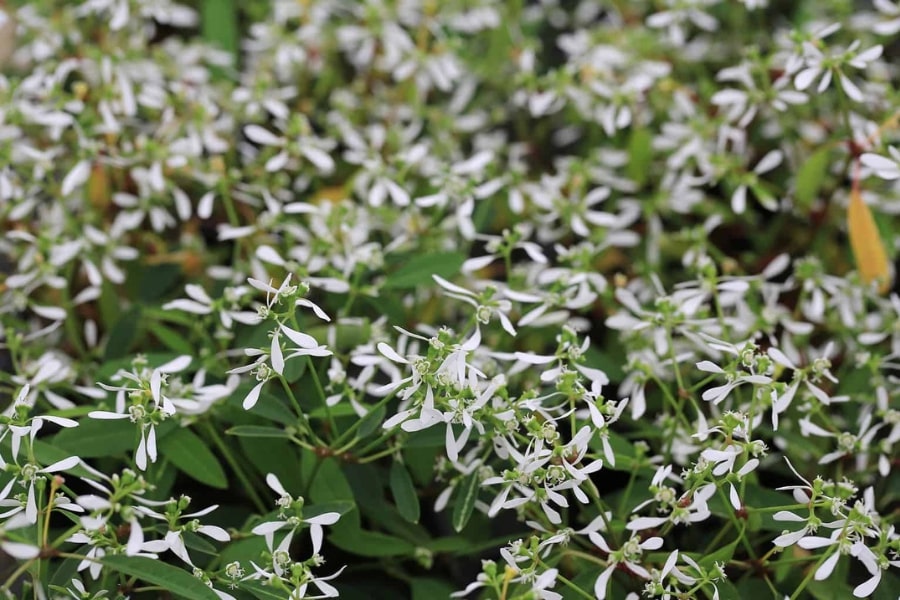
Growing and Caring for Euphorbia
Euphorbia plants have specific preferred growing conditions contributing to their overall health and thriving growth. Firstly, they prefer a well-drained soil mixture that mimics their natural habitat. A sandy or loamy soil with good drainage is ideal. Avoid heavy clay soils that tend to retain moisture, as this can lead to root rot. If necessary, amend the soil with organic matter, perlite or even succulent soil to improve drainage.
Euphorbia plants can be grown in full sun to partial shade. If grown without direct sunlight (full shade) they will tend to be leggy and will lack the more vibrant colors, but will still have showy blooms in the spring and provide evergreen color in the winter. For best practice, ensure that the plants receive at least four hours of direct sunlight each day.
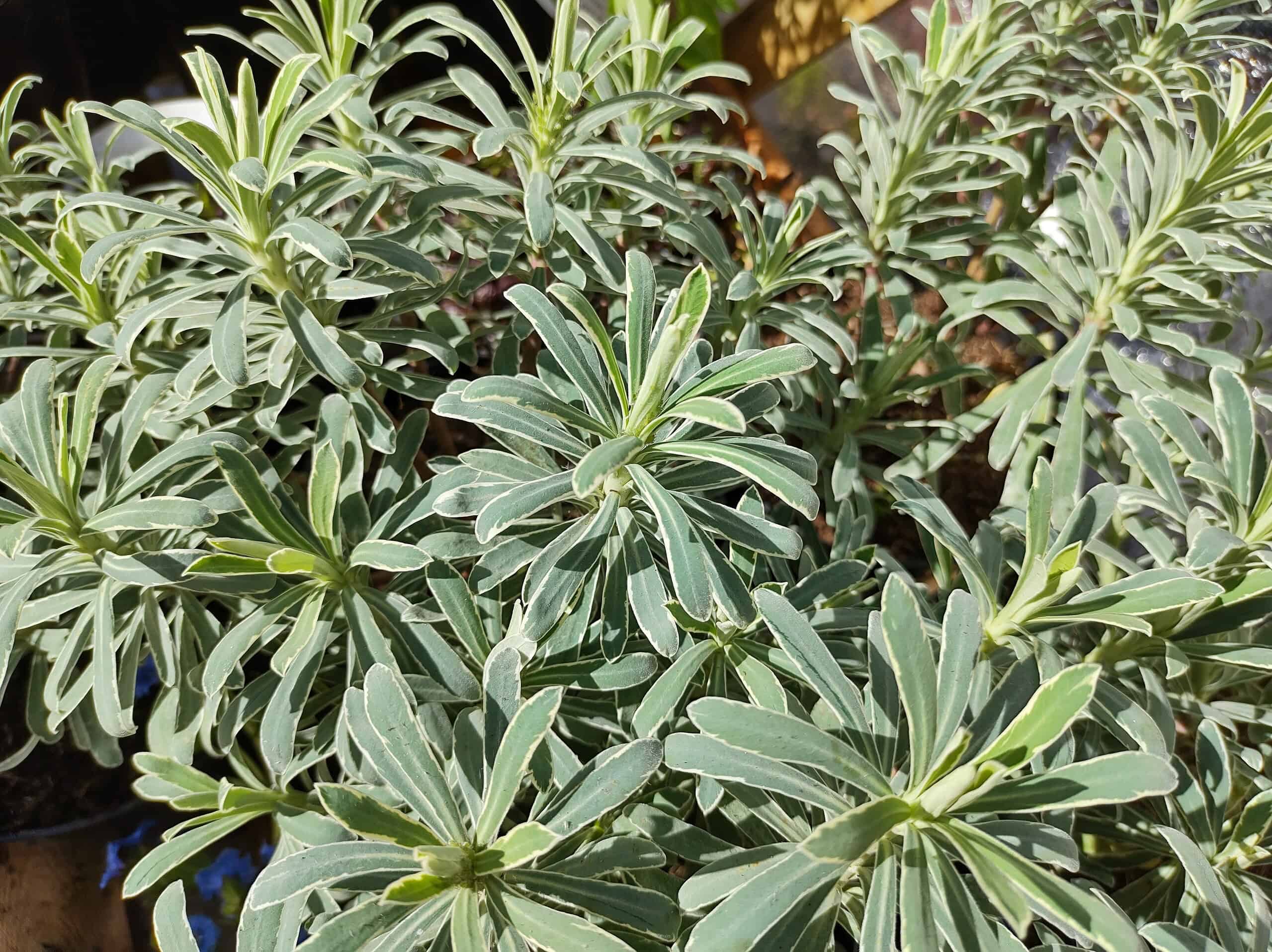
Euphorbia are not heavy feeders so go sparingly on the fertilizer. A slow-release fertilizer in the spring or in the fall is adequate to keep the plant performing. Additionally, Euphorbia are drought-tolerant plants that prefer infrequent but deep watering. Allow the soil to dry out between waterings to prevent overwatering and promote root health. It’s important to note that while Euphorbia can withstand dry periods, they still benefit from occasional watering during extended droughts or arid conditions.
Leaves and Flowers
The foliage of Euphorbia is as varied as its growth habits, ranging from narrow, needle-like leaves to thin, boldly colored or variegated ones. Annual Euphorbia leaves are barely noticeable thin green leaves though some new varieties have pinkish textured leaves to add color variety. The flowers of annual Euphorbia will bloom all season and are self-cleaning. Most annual euphorbia are airy white blooms though several new cultivars have blush pink and medium pink blooms.
Perennial varieties sport a variety of color choices in foliage including variegated greens/yellows/chartreuses, burgundy, reddish orange, gray green, blue green, and splashes of cream, pink. The flowers of perennial Euphorbia are also unique. They are small and inconspicuous and do not have petals or sepals. Instead, they have structures called cyathia, which are composed of modified bracts that form a cup-shaped structure approximately 1/4 inch in size around the tiny flowers. The cyathia are often brightly colored and are arranged in clusters, making them appear like a single flower. Generally, the tiny pin-point sized flower is often the opposite color. For example, cyathia are chartreuse green and the flower is burgundy red.
Perennial Euphorbia make long lasting cut flowers for bouquets. If Euphorbia flowers are not used for cut flower arrangements, they should be removed once spent by cutting the Euphorbia to 6-9 inches. This promotes new and more compact growth as well as more blooms for the following year. Perennial Euphorbia usually flower in the spring. If cut back in late spring, they may reflower in the Fall.
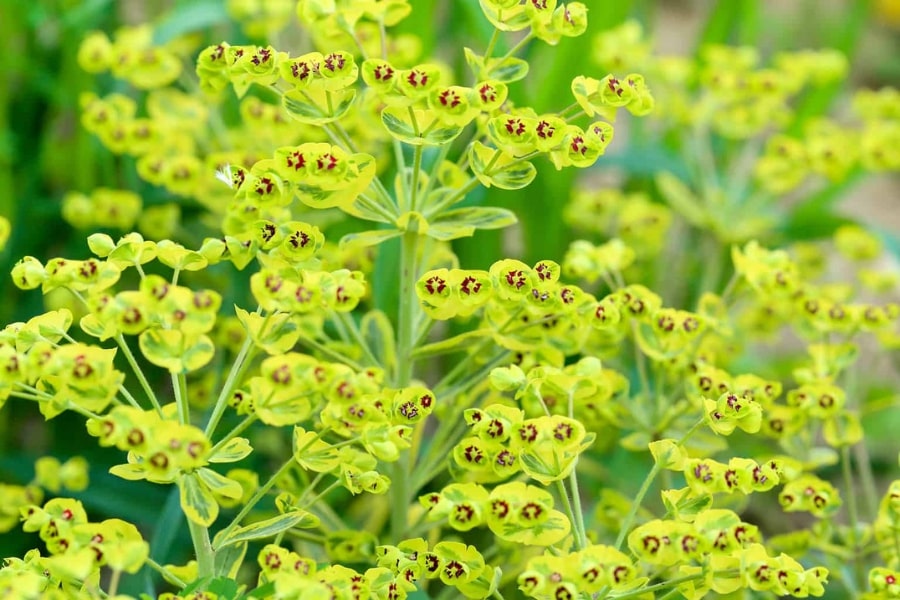
Milky Sap
The most distinctive feature of the Euphorbia plant is its milky sap, which is present in all parts of the plant. The sap contains latex, which can cause irritation if it comes in contact with the skin or eyes. This sap can be used in many different ways, such as in traditional medicine and as a source of rubber. However, some Euphorbia species are toxic and can cause serious health problems if ingested. If you have allergies to latex, you may have an allergy to the milky sap produced by Euphorbia. Consider wearing gloves and safety goggles when working with Euphorbia.
If you get the sap on your skin and your skin feels irritated, rinse your skin with soap and water. If you get Euphorbia sap in your eye, quickly and gently rinse your eye with clean, lukewarm water. Do not rub your eyes; this can spread the irritant and worsen the situation. Hold your eyelids open and use a steady stream of water to flush out the sap. Continue to rinse your eye for at least 15 minutes. This helps to wash away the sap and reduce irritation.
If irritation persists after rinsing or you experience severe pain, redness, swelling, or vision changes, seek prompt medical attention. Consult with an eye care professional or visit the nearest emergency room.
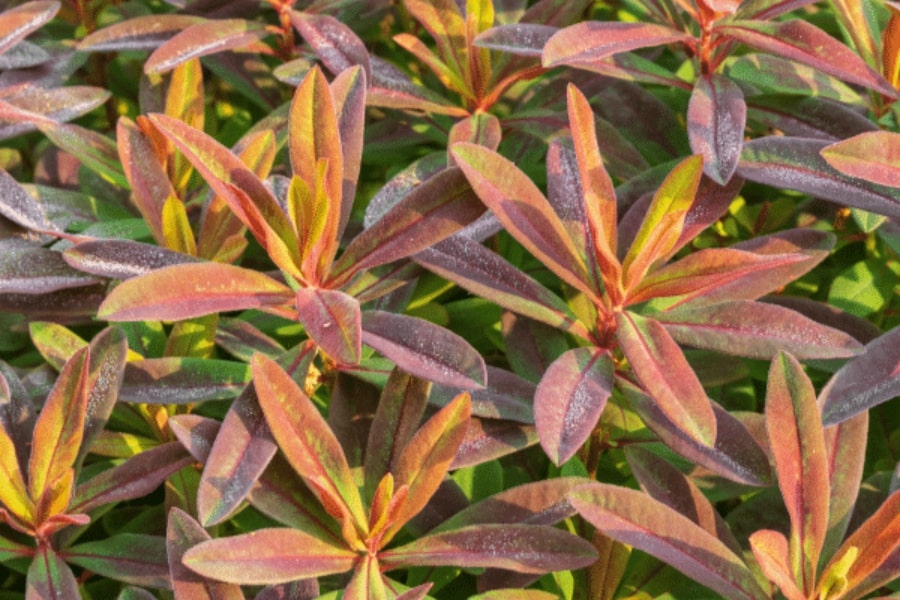
Frequently Asked Questions
Which Euphorbia Plant Causes Cancer?
According to online research, the African milkbush (Euphorbia tirucalli) is a plant that has been linked to Burkitts lymphoma, the most common form of childhood cancer in central Africa. However, the confusion worsens because of the use of the term “cancer weed” being used with Euphorbia peplus, commonly known as petty spurge or radium weed. Euphorbia peplus contains ingenol mebutate, which has been investigated for its potential anti-cancer properties (not cancer causing properties). In sum, don’t worry about Euphorbia causing cancer regardless of whether the sap is an irritant.
Is Euphorbia Deer-Resistant?
Euphorbia plants are often considered deer-resistant, and many gardeners choose them for landscaping in areas with deer populations. The milky sap produced by Euphorbia plants contains compounds that irritate the skin and mucous membranes, deterring animals, including deer, from feeding on them.
